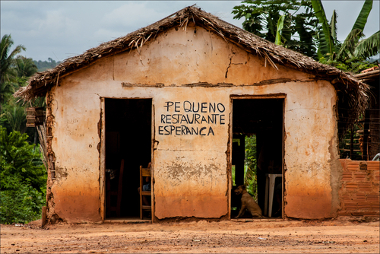RIO DE JANEIRO, BRAZIL – Despite first quarter GDP growth above expectations, data show that the country has never had so many unemployed and that poverty indexes are increasing. High inflation is compounding the problem.

The 1.2% growth in the Gross Domestic Product (GDP) for the first quarter 2021, released recently by the Brazilian Institute of Geography and Statistics (IBGE), was around 0.7% above market expectations, but the apparently positive data masks a structural problem in the country: growing social inequality.
Amid a pandemic that has already killed over 470,000 Brazilians, the increase in poverty is exacerbated by record unemployment and relentless inflation that is shrinking the purchasing power of Brazilians – who, to make matters worse, are back on the hunger map.
Such a scenario runs counter to the most optimistic market estimates, which started projecting GDP growth of between 5% and 5.5%, soon after IBGE data were released. However, these rates reflect the country’s low growth capacity, since a 4.9% share is attributed to the recalculation of the GDP statistical loading for 2020, in other words, pure inertia.
Analysts also point out that recovery is heterogeneous, with the main growth driver, consumption, still in the negative field – which helped industrial production shrink 1.3% in April and fall 1% below the pre-crisis level of February 2020. In addition, the service sector, which employs the most people, is still far from its pre-pandemic level and will only see a stronger recovery in the last quarter of the year, if the government’s pledge to vaccinate the entire population is fulfilled.
Last year, the emergency aid of R$600 (US$118.4) per month for the most vulnerable and R$1,200 for households headed by women masked this reality and temporarily reduced the number of poor people in the country – which has increased again this year.
A study published in April by the Center for Research in Macroeconomics of Inequalities of the University of São Paulo (MADE/USP), called “Gender and race in evidence during the pandemic in Brazil: the impact of emergency aid on poverty and extreme poverty,” estimates an increase of 9 million people in poverty and food insecurity one year after the pandemic began.
The research shows that in 2020, the rate of Brazilians in poverty dropped from 25% before the pandemic to 20% after the R$600 emergency aid. Without the benefit, in 2021, the poverty rate would have reached more than 30%. The share of people in extreme poverty dropped from about 7% in 2019 to 3% last year.
“In 2021, the extreme poverty rate would have risen to over 10%. This would have been a significant worsening during the emergency aid ‘blackout,'” says economist Pedro Fernando Nery, consultant for the National Congress.
One of the authors of the MADE/USP study, economist Luísa Cardoso Guedes de Souza, PhD in demography from the Federal University of Minas Gerais (UFMG), alerts that “according to the IBGE, Brazil returned to the hunger map in 2018,” with an increase in poverty greater among women and blacks.
“We calculate that in 2019, before the pandemic, the extreme poverty rate in the country stood at 6.6%, which represents 13.9 million people. The poverty rate stood at 24.8%, affecting 51.9 million Brazilians. Considering the average value of R$250 established for the emergency aid in 2021, we see that the extreme poverty rate this year should reach 9.1% (19.3 million people) and the poverty rate will hit 28.9% (61.1 million people). Thus, after one year of pandemic, we will have an increase of approximately 9 million Brazilians in poverty and food insecurity,” she says.
According to the demographer, the emergency aid beneficiaries are low-income people, in a greater situation of vulnerability. “Despite the increase in GDP in the first quarter 2021, household consumption has not kept up with this growth. The recent rise in inflation, in particular, the increase in food prices, most impacts the poorest households,” she says. According to her, the results show that “the 2021 emergency aid is insufficient to contain the population’s income loss” due to the pandemic.
“Considering that we do not know if the aid will be extended for a longer period of time, nor how the vaccination rate will evolve until the end of the year, it is very likely that poverty will not be mitigated in 2021,” she adds.
According to Luísa Cardoso, it is very likely that the impoverishment of the population and the increase in social inequality will continue beyond the period of the emergency aid. “Our study clearly shows that black women are suffering the most from the crisis.”
“The increase in poverty in Brazil reflects regional, racial and gender inequalities in Brazil. The overrepresentation of black women in poverty is one of the consequences of gender and race inequality that have always been present in our society, even before the pandemic.”

